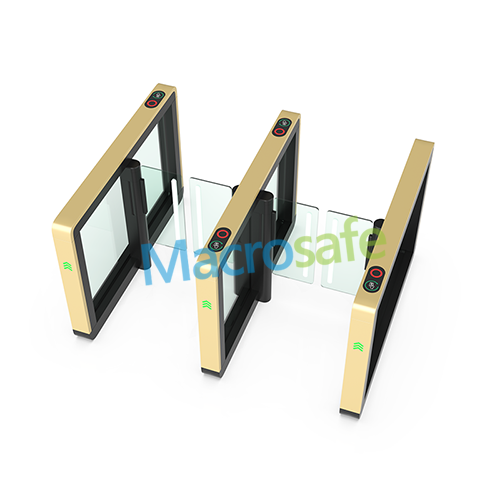How Handicap Turnstiles Aid Accessibility in Public Spaces
3 min read
Last Updated on July 19, 2023 by David Brad
Public spaces are mandated to prioritize accessibility for all individuals, including those with mobility challenges. One of the innovative ways of achieving this is through handicap turnstiles, which provide a seamless and efficient way for individuals with mobility challenges to access these spaces.
In this article, we will explore how turnstiles contribute to improving accessibility in public spaces, their benefits, challenges, and the role played by innovation.
What Are Handicap Turnstiles?
Handicap turnstiles are specialized turnstile systems designed to cater to individuals with disabilities, mobility issues, or temporarily impaired mobility. Handicap turnstiles integrate advanced technologies such as biometrics, radio-frequency identification, and sensors that allow individuals to pass through the turnstile easily while maintaining security and safety within the facility.
How Do Handicap Turnstiles Aid Accessibility?
Handicap turnstiles provide barrier-free access at public spaces such as government buildings, airports, train stations, museums, among others. This makes essential public spaces more accessible to individuals with different levels of mobility, promoting inclusivity.
The following are ways in which handicap turnstiles enhance accessibility in public spaces:-
- Eliminating Barriers – Handicap turnstiles have been designed to remove the barriers that prevent individuals with mobility challenges from accessing public spaces. By providing a wider turnstile gate, individuals with mobility devices such as wheelchairs, crutches, walkers, or those with limited mobility can pass through with more convenience.
- Automated Assistance – Handicap turnstiles have also been equipped with advanced automation technology that eliminates the need for additional personnel to assist individuals with mobility issues. This improves efficiency and makes the facility more accessible to everyone.
- Functional Ease – In addition to providing easy access, handicap turnstiles provide an experience that is proportional to the user’s ability. Some handicap-friendly turnstiles have been optimized with easy-to-read touch screens and responsive interfaces that make the process of passage much more straightforward and intuitive.
Benefits of Handicap Turnstiles
Handicap turnstiles offer numerous benefits, and these include:
- Compliance – Handicap turnstiles provide a compliant solution for public facilities looking to comply with regulations regarding access to public spaces.
- Enhanced Efficiency – By eliminating the need for additional personnel to assist individuals with mobility issues, public facilities can maximize their operational efficiency and reduce labor costs.
- Increased Accessibility – Handicap turnstiles contribute to raising the bar for inclusive public spaces, providing a more accessible option for individuals with mobility challenges.
Challenges of Handicap Turnstiles
While handicap turnstiles are a step in the right direction towards inclusive public spaces, certain challenges be addressed.
- Space Constraints – Public facilities may face space constraints when installing handicap turnstiles, especially in areas with heavy pedestrian traffic. In such cases, a proper assessment is crucial to ensuring that the handicap turnstile system does not cause congestion or inconvenience users.
- Maintenance – Handicap turnstiles, like any other mechanical infrastructure, will require maintenance. This may pose a significant challenge, especially for public facilities operating 24/7.
Role of Innovation in Handicap Turnstile Development
Technological advancements have brought about innovative designs of handicap turnstiles, significantly improving the accessibility in public spaces. One such design is the incorporation of contactless biometric systems that can identify individuals requiring assistance.
Moreover, Artificial Intelligence (AI) has also contributed to the development of advanced algorithms that enhance the functionality of handicap turnstiles. For instance, AI algorithms can identify any anomalies in the passage, alert security personnel, and even create a report.
Conclusion
Handicap turnstiles play an integral role in making public facilities more accessible to individuals with mobility challenges. Facilities like airports, museums, train stations, and government buildings with high pedestrian traffic can use these digitized turnstiles to enhance their operational efficiency, comply with the regulations, and promote inclusivity.
Public facilities looking to install handicap turnstiles should engage with independent experts in the application and installation of handicap turnstile systems to ensure that they comply with building codes, traffic regulations, and ADA compliance.






